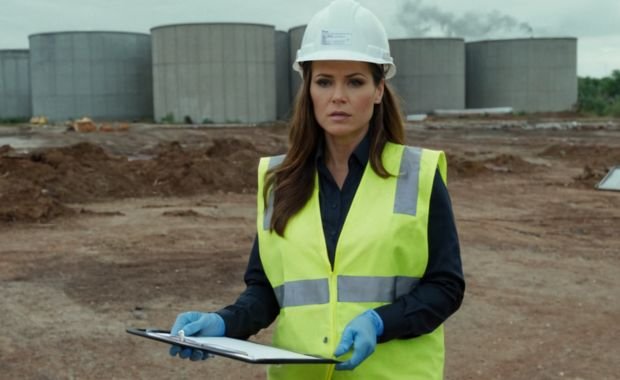In the world of property development, the success of a project hinges on careful planning, risk assessment, and informed decision-making. One of the most crucial steps in the early stages of any development project is conducting a comprehensive desktop survey. This preliminary study, often overlooked by some developers, serves as a foundational tool that provides critical insights into the potential challenges and opportunities associated with a site. This article explores why every development project needs a comprehensive desktop survey and how it contributes to the overall success of the project.
Understanding a Desktop Survey
A desktop survey, also known as a desk study, is an initial assessment conducted using readily available information about a specific site. Unlike field surveys, which require physical inspections, a desktop survey is performed remotely. It involves analyzing maps, historical records, environmental databases, planning documents, and other relevant data sources to gather a detailed understanding of the site’s characteristics, risks, and potential constraints.
Early Risk Identification
One of the primary reasons for conducting a comprehensive desktop survey is to identify potential risks early in the development process. These risks can include environmental hazards, such as contaminated land, flood risks, or proximity to industrial sites. By recognizing these issues at the outset, developers can take proactive measures to mitigate them, rather than facing costly surprises later in the project.
For example, if a desktop survey reveals that a site has a history of industrial use, there may be a risk of soil or groundwater contamination. Identifying this risk early allows developers to plan for further investigation and remediation, ensuring the project complies with environmental regulations and avoids delays. Similarly, understanding flood risks early can inform the design of flood defenses or prompt the selection of an alternative site.
Legal and Planning Considerations
Navigating the legal and planning frameworks that govern property development is a complex task. A comprehensive desktop survey helps developers understand the legal status of a site, including zoning regulations, planning permissions, and any restrictive covenants. This knowledge is essential for ensuring that the proposed development complies with all relevant laws and regulations.
For instance, a site located within a conservation area may be subject to strict planning controls that limit the types of development permitted. A desktop survey can reveal these constraints, allowing developers to adjust their plans accordingly or seek necessary permissions from the local planning authority. Understanding these legal considerations early in the process helps avoid legal challenges and ensures a smoother approval process.
Assessing Infrastructure and Accessibility
Infrastructure and accessibility are critical factors in the viability of a development project. A desktop survey provides valuable insights into the existing infrastructure, such as roads, utilities, and public transport links, that serve the site. It also assesses the site’s connectivity to essential services and amenities, which can significantly impact the project’s success.
For example, if a site is poorly connected to major transport routes or lacks access to utilities like water, electricity, or sewage systems, these issues need to be addressed in the development plan. By identifying these infrastructure challenges early, developers can plan for necessary upgrades or explore alternative locations that are better suited to the project’s needs.
Environmental and Ecological Considerations
Environmental and ecological factors play a crucial role in the planning and execution of development projects. A comprehensive desktop survey helps identify any environmental sensitivities associated with the site, such as the presence of protected species, habitats, or areas of high biodiversity value. This information is essential for ensuring that the development complies with environmental regulations and does not harm the natural environment.
For example, if a desktop survey reveals that a site is home to a protected species, such as bats or newts, developers may need to conduct further ecological surveys and implement mitigation measures to protect these species during construction. Understanding these environmental considerations early helps developers avoid delays and ensures that the project aligns with sustainability goals.
Cost Estimation and Budgeting
Accurate cost estimation is critical to the financial success of a development project. A desktop survey provides valuable information that can help developers accurately estimate the costs associated with site preparation, remediation, and infrastructure upgrades. By identifying potential challenges early, developers can allocate resources more effectively and avoid unexpected expenses that could derail the project.
For instance, if a desktop survey identifies the need for significant soil remediation due to contamination, this information can be factored into the project’s budget from the outset. Similarly, understanding the need for infrastructure upgrades, such as road improvements or utility connections, allows developers to plan for these costs in advance, ensuring that the project remains financially viable.
Supporting Informed Decision-Making
Informed decision-making is the cornerstone of successful property development. A comprehensive desktop survey provides developers with the data and insights needed to make informed decisions at every stage of the project. Whether it’s selecting the right site, designing the development, or navigating the planning process, the information gathered through a desktop survey is invaluable.
For example, if a desktop survey reveals that a site has multiple constraints, such as environmental risks, legal restrictions, and poor infrastructure, developers may decide that the site is not suitable for their project. Alternatively, they may use the information to develop a strategy that addresses these challenges, ensuring that the project can proceed with minimal risk.
Conclusion
In conclusion, a comprehensive desktop survey is an essential tool for any development project. By identifying potential risks, navigating legal and planning frameworks, assessing infrastructure, considering environmental factors, and supporting informed decision-making, a desktop survey lays the groundwork for a successful and compliant development project. It helps developers avoid costly mistakes, ensures compliance with regulations, and ultimately contributes to the long-term success of the project. In the fast-paced and often complex world of property development, the insights provided by a desktop survey are invaluable, making it a critical component of the due diligence process.



